
Cádiz is a province of southern Spain, in the southwestern part of the autonomous community of Andalusia. It is the southernmost part of mainland Spain, as well as the southernmost part of continental Europe.
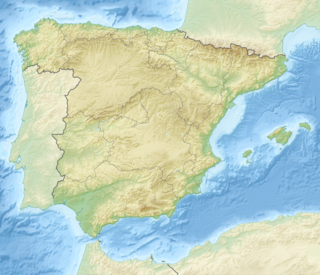
Tarifa is a Spanish municipality in the province of Cádiz, Andalusia. Located at the southernmost end of the Iberian Peninsula, it is primarily known as one of the world's most popular destinations for windsports. Tarifa lies on the Costa de la Luz and across the Strait of Gibraltar facing Morocco.

Algeciras is a municipality of Spain belonging to the province of Cádiz, Andalusia. Located in the southern end of the Iberian Peninsula, near the Strait of Gibraltar, it is the largest city on the Bay of Gibraltar. The Port of Algeciras is one of the largest ports in Europe and the world in three categories: container, cargo and transshipment. The urban area straddles the small Río de la Miel, which is the southernmost river of continental Europe. As of 1 January 2020, the municipality had a registered population of 123,078. It forms part of the comarca of Campo de Gibraltar.

San Roque is a small town and municipality in the south of Spain. It is part of the province of Cádiz, which in turn is part of the autonomous community of Andalusia. San Roque is situated a short way inland of the north side of the Bay of Gibraltar, to the north of the Gibraltar peninsula. The municipality has a total surface of 145 km2 with a population of approximately 25,500 people, as of 2005. Its name is Spanish for Saint Roch, a Christian saint who was revered in a shrine dating back to 1508 that predates the foundation of the town.
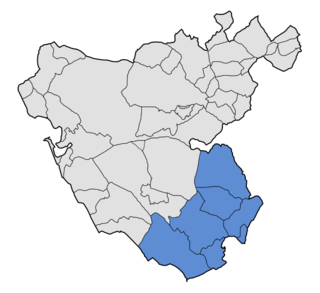
Campo de Gibraltar is a comarca (county) in the province of Cádiz, Spain, in the southwestern part of the autonomous community of Andalusia, the southernmost part of mainland Europe. It comprises the municipalities of Algeciras, La Línea de la Concepción, San Roque, Los Barrios, Castellar de la Frontera, Jimena de la Frontera and Tarifa.
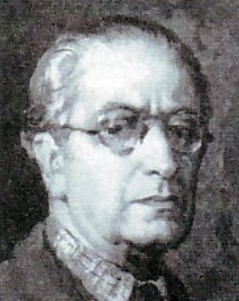
Gustavo Bacarisa (1873–1971) GMH was a Gibraltarian painter. He was born in Gibraltar and died in Seville, Spain. His work, of a figurative style and varied themes, is characterised by the rich use of colour.

Rusadir was an ancient Punic and Roman town at what is now Melilla, Spain, in northwest Africa. Under the Roman Empire, it was a colony in the province of Mauretania Tingitana.
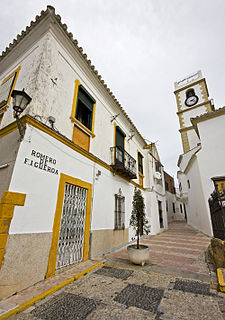
Juan Romero de Figueroa was a Spanish Roman Catholic priest, in charge of the Parish Church of St. Mary the Crowned during the last years of Gibraltar's Spanish period and first ones of the British period, until his death. He remained at his post even after the territory's capture by an Anglo-Dutch fleet in 1704 on behalf of the Archduke Charles, pretender to the Spanish throne in the War of the Spanish Succession, when most of its population abandoned Gibraltar.
Juan Mateos (?-1594) was a wealthy inhabitant of Gibraltar during the Spanish period. He was remembered for being the founder of Gibraltar's first hospital, which subsequently became the old St Bernard's Hospital.

The Royal Calpe Hunt of the British Crown Colony of Gibraltar originated in 1812 as the Civil Hunt. The fox hunt was initially a civilian endeavour that began when a pair of English foxhounds were imported to Gibraltar. The hunts took place across the border, in the Campo de Gibraltar area of Spain. However, in 1814, the membership of the Hunt underwent a substantial change. Many officers of the Gibraltar garrison joined the Hunt, which shifted from a civilian to a military enterprise. That year, the name was changed to the Civil Calpe Hunt. It retained that title until 1817, after which it was known as the Calpe Hunt. The first Master of the Hunt was Charles Elphinstone Fleeming. However, the Master most associated with the Hunt was Pablo Larios, Marquis of Marzales, who held that title for forty-five years. His election to that position in 1891 was not only historic, but strategic. His appointment represented only the second time that the position had not been filled by a member of the military. In addition, his Spanish heritage and influence in the Campo de Gibraltar, where he owned extensive estates, garnered him the loyalty of the local Spanish farmers, and therefore eased the ever-present tensions between the military and the farmers over the crop damage that was inherent to the Hunt. In 1906, King Edward VII of the United Kingdom and King Alfonso XIII of Spain became joint Patrons of the Hunt, after which it was known as the Royal Calpe Hunt. The tradition of the Hunt continued for more than a century, until 1939, and the onset of the Second World War

The South Bastion was part of the fortifications of Gibraltar, protecting the western base of the Charles V Wall. It was originally built by Spanish military engineers, later improved by the British. The South Bastion stands at the south end of the Line Wall Curtain which defends the town from attack from the Bay of Gibraltar. Another curtain wall runs east from the bastion to the base of a precipice. This wall is pierced by the Southport Gates, guarded by the South Bastion and the Flat Bastion on either side.

Cala Arenas is a beach situated near the city of Algeciras in Spain, within the El Estrecho Natural Park. It is located at the southern end of the Bay of Gibraltar and faces the Strait of Gibraltar. It measures about 400 metres (1,300 ft) long by about 30 metres (98 ft) deep. The beach is somewhat difficult to access, but can be reached via coastal paths from Punta Carnero and Punta del Fraile. It consists of a series of three small coves of similar appearance, with beaches of rocks and small stones. Both the terrestrial and marine environment of the area lies within the natural park. Its surroundings are largely undisturbed by human activity; the nearest settlement is the coastal community of Getares, a small outlying development of the city of Algeciras located about 1 km to the north. The beach is framed by cliffs and the Isla de las Palomas lies a short distance offshore.

Fuerte de Isla Verde was a military installation formerly located in Algeciras, Spain. It occupied the Isla Verde, which gave its name to the city as a whole. The elongated island, which stood a short distance offshore of the city's old town, was already the site of an artillery battery in 1720. In 1734 the fort was constructed on the island to the plans of the military engineer Juan de Subreville. Further remodeling took place in 1745 under Lorenzo de Solís. The installation, which followed the roughly triangular shape of the island, was initially equipped with three batteries. These were:
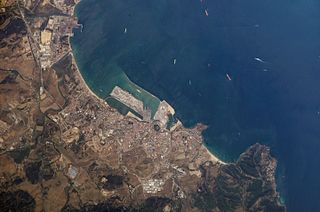
The siege of Algeciras (1342–1344) was undertaken during the Reconquest of Spain by the Castillian forces of Alfonso XI assisted by the fleets of the Kingdom of Aragon and the Republic of Genoa. The objective was to capture the Muslim city of Al-Jazeera Al-Khadra, called Algeciras by Christians. The city was the capital and the main port of the European territory of the Marinid Empire.

The siege of Algeciras (1369) was undertaken during the period of the Reconquest of Spain by Muhammed V, Sultan of Granada to reclaim the city of Al-Hadra Al-Yazirat, called Algeciras by the Christians, in the Kingdom of Castile. The siege lasted just three days, and the sultan was victorious. The Muslims thus regained a major city which had been in Castilian hands since Alfonso XI of Castile took it from the Moroccans after the long 1342–1344 siege. Ten years after the capture of the city, in 1379 the sultan of Granada decided to completely destroy the city to prevent it falling into Christian hands. It was impossible to defend the place at a time when the Muslim kings of the Iberian Peninsula had lost much of military power they enjoyed in earlier centuries.

Iulia Traducta was a Roman city in Andalusia, Spain, on the site of the modern Algeciras.
Ramón Sánchez Gómez, better known by his stage name Ramón de Algeciras, was a Spanish flamenco guitarist, composer and lyricist. He was the most prolific collaborator of Paco de Lucía, his younger brother, recording with him on most of his albums from the 1960s to 1980s and performing with him throughout much of his life as a rhythm guitarist, including the Paco de Lucía Sextet, formed in 1981, which also included his other brother Pepe de Lucía.

The Sieges of Ceuta were a series of blockades by Moroccan forces of the Spanish-held city of Ceuta on the North African coast. The first siege began on 23 October 1694 and finished in 1720 when reinforcements arrived. During the 26 years of the first siege, the city underwent changes leading to the loss of its Portuguese character. While most of the military operations took place around the city walls, there were also small-scale penetrations by Spanish forces at various points on the Moroccan coast, and the seizure of shipping in the Strait of Gibraltar. The city was placed under a second siege in 1721 until 22 April 1727. The engagements are considered to be the longest siege in history.
Trino Cruz Seruya is a Gibraltarian poet.
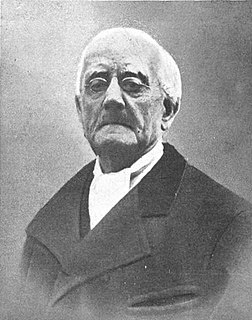
Eduardo Benot Rodríguez was a Spanish lexicographer, academic, poet, educator and politician advocate of federal republicanism. Follower of Francisco Pi y Margall, he briefly served as Minister of Development during the First Spanish Republic.

















